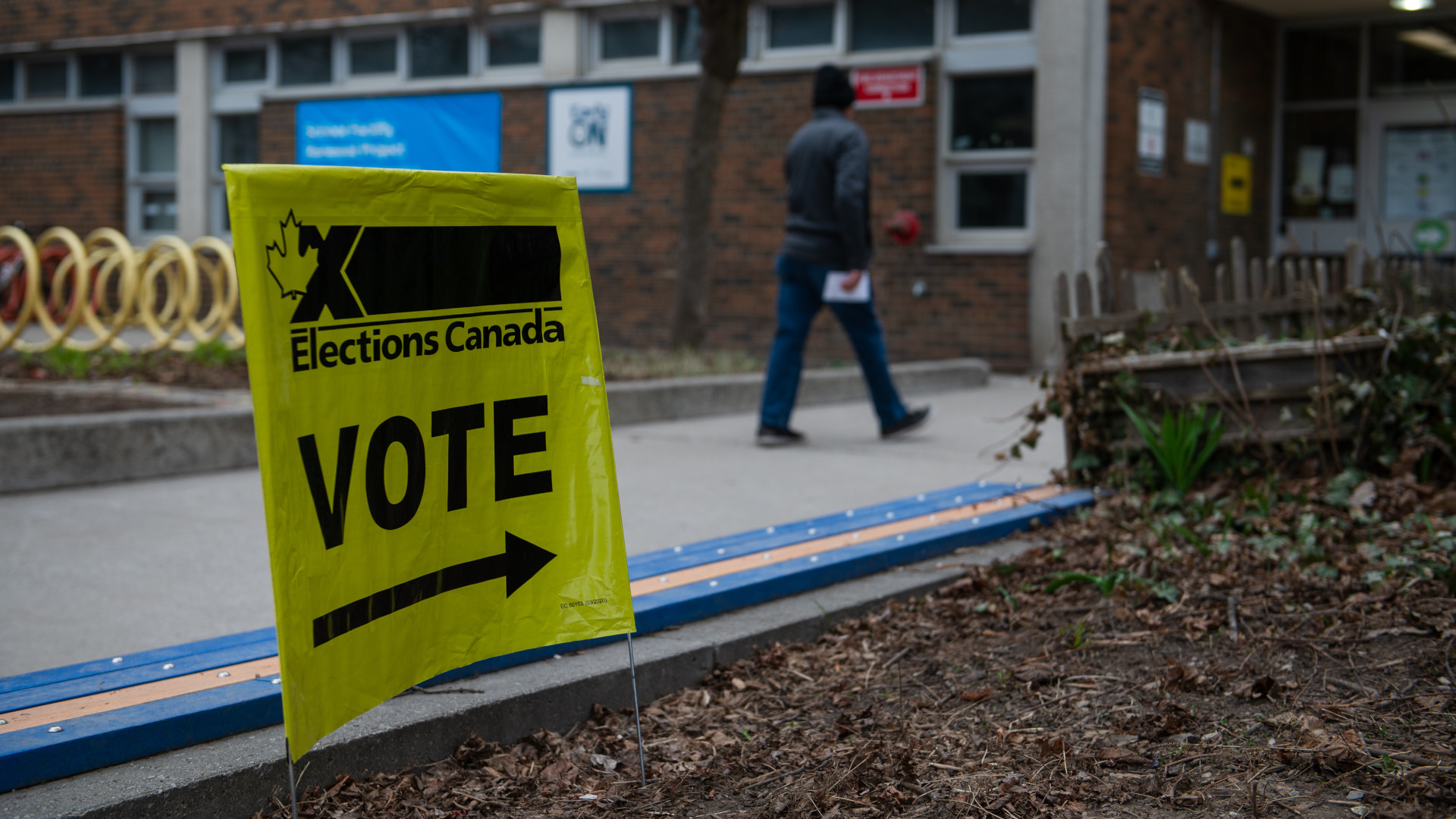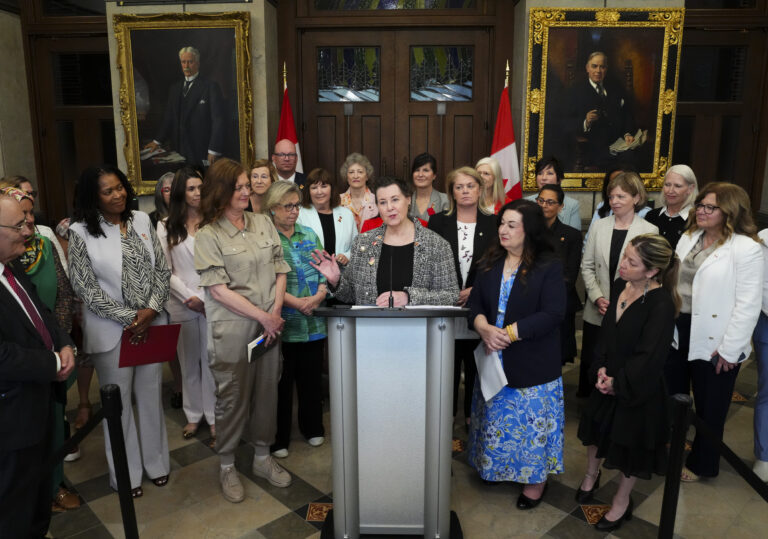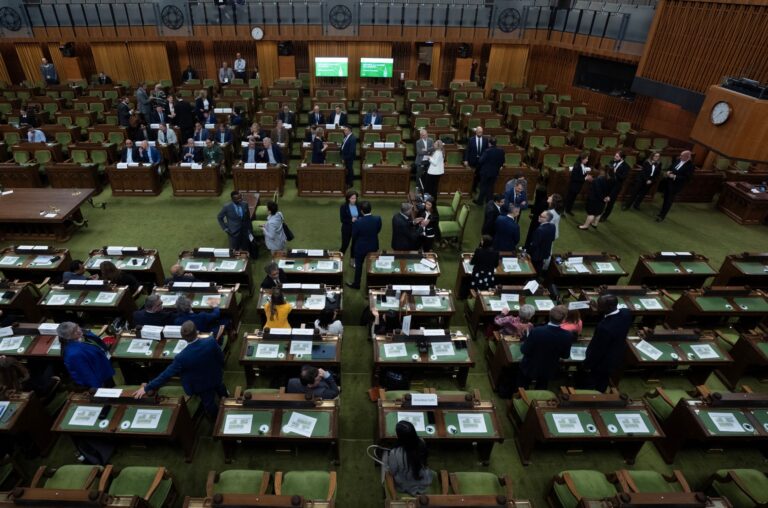Sign up for A Stronger Canada for The Trump Era. A temporary newsletter with the latest Canada-U.S. analyses from Policy Options.
(Version française disponible ici)
With less than a week to go before the federal election, Canadian voters are left with a familiar question right up to the moment they cast their vote: What can they really believe?
As in every election campaign, voters this time have been inundated with promises: tax cuts, massive housing construction, the revival of regional rail transport, new childcare spaces… the list goes on. Each party has its own vision to seduce the electorate.
To shed light on this democratic choice, it is worth reviewing past promises, particularly those of Justin Trudeau, who, after nearly a decade in power, presented three solid mandates for assessing pledge-keeping records.
Have successive Trudeau governments broken more promises than they have kept? How have previous federal governments fared when it comes to delivering on promises? What does this suggest for the promises of the 2025 election campaign?
In a recently published book, our research group takes stock of the promise-fulfillment record of Justin Trudeau’s Liberal government, while analyzing the factors that influence the ability of governing parties to deliver on their promises. This analysis is based on more than ten years of rigorous tracking of election promises in Canada, conducted by the Polimeter team. The Polimeter is an independent, non-partisan tool designed and managed by political scientists at the Center for Public Policy Analysis, in collaboration with partners in Ontario and New Brunswick.
A promise is a promise! But not always…
Let’s start by clarifying the definition of an election promise. According to the Polimeter, an election promise must meet three specific criteria.
First, it is a formal commitment presented by a political party in the context of an election (whether in an official platform, a press release or a document submitted to the parliamentary budget officer).
Second, it must concern the achievement of a given action or result, or the adoption, maintenance, or withdrawal of a policy, law, reform, project, or program in the event of election.
Finally, it must be sufficiently clear to enable citizens to identify a measurable result or observable political action (or lack of action). Thus, some statements made by political parties are promises, while others are no more than rhetoric.
For example, a statement that the party will make life more affordable for families is too vague to constitute a promise. However, pledging to make life more affordable for families by reducing income taxes, eliminating the GST on certain products or increasing the Canada Child Benefit can be categorized as an election promise. Similarly, pledging to reduce Canada’s poverty rate by 10 per cent or to balance the budget in three years are promises aimed at achieving a measurable, observable result.
Governments keep their word… most of the time
Polimeter data, combined with the results of international studies, show that governments generally keep the majority of their promises, either in full or in part. Thus, it is essential that voters carefully examine political party programs and promises to avoid surprises after elections.
Figure 1 compares the promise-fulfillment record of Justin Trudeau’s three Liberal governments between 2015 and 2025. The majority Trudeau government (2015-2019) set a record with the highest number of promises made (353) at that time, as well as the highest number of promises fulfilled (236) and partially fulfilled (92), compared to previous governments from 1993 to 2015. In all, the first Trudeau government fulfilled or partially fulfilled 92.2 per cent of its 353 promises.
This contrasts with the Liberal government’s second term (2019-2021), marked by a record percentage (48 per cent) and high number (165) of broken promises. Nearly 52 per cent of the 343 promises were fully or partially fulfilled. Although the global pandemic of COVID-19, which occurred a few months into the mandate, may explain some of this record, the most decisive factor remains the government’s decision to call an early election after less than two years in office, reducing the time available to honour its commitments.
Justin Trudeau’s second Liberal minority government (2021-2025) fulfilled 44 per cent of the 354 promises made during the 2021 election, while 32 per cent were partially fulfilled and 24 per cent broken. In total, 76 per cent of promises have been fully or partially fulfilled, a higher percentage than the average for Canadian governments since 1993 (70 per cent). However, only 44 per cent of promises were fully kept, below the average of 56 per cent.
This mandate shows that a minority government benefiting from a support and confidence agreement, such as the one concluded with the NDP, can remain in office for almost the entire expected duration of a mandate, making it easier for it to fulfill more promises than a short-term minority government.
Although the data presented here is clear and validated by experts, the results do not weight for the relative importance of the promises. To find out more about the election promises of the Trudeau era and form your own opinion of his record on the issues that matter to you, the Polimeter team invites political data consumers and citizens in general to explore the Canadian Polimeter web application. This application provides access to a database of past and current election promises from federal and some provincial governments. Users can sort the information by mandate, public policy area, and verdict.
Canadian federal governments score well
Figures 2 and 3 show the promise-fulfillment records of federal governments, comparing the Trudeau era with all previous federal governments for which data is available (1993-2015). Whether we consider the total number of promises, or the percentages of promises fulfilled and partially fulfilled, the facts are clear: Canadian federal governments generally fulfill more promises than they break.
According to our research, governments tend to keep their promises, even in times of crisis. Many factors influence the fulfillment of promises. One of these factors is the way in which promises are formulated: the more detailed and complex a promise is, or the more it refers to recommendations in a special report, the more likely it is to be partially fulfilled, due to the additional conditions required to fulfill the promise completely.
Take, for example, the Trudeau government’s promise to implement former Justice Louise Arbour’s recommendations concerning toxic culture in the Canadian Armed Forces. Only 17 of the 48 recommendations were fully implemented. The large number of recommendations constituted many conditions to be fulfilled to keep this promise, thus increasing the risk that it would only be partially fulfilled.
Another factor is the nature of the change announced in the promise: it is easier to maintain the status quo than to implement promises aimed at transforming an area of public policy. Additionally, promises that involve collaboration with other players or that go beyond the exclusive jurisdiction of the federal government will be more difficult to fulfill.
Promises in the areas of early childhood education and day care or health care should be treated with caution. They require collaboration and action from the provinces, territories, and Indigenous communities. The federal government can neither oblige other governments to achieve a target nor impose consequences on them when a target is missed in areas outside federal jurisdiction.
Unsurprisingly, federal political parties regularly use promise language such as “we will negotiate bilateral agreements…” or “we will work with the provinces and territories…” or “we will invest X amount of money in a program,” as they intend to use the federal spending power to direct the priorities of other levels of government.
Similarly, for promises related to national defense or foreign affairs, Canada must collaborate with other partner countries, NATO, and international organizations that have their own political dynamics and collective objectives. Whatever the parties promise in the face of Trump’s threats, the only certainty is that the next government will have to renegotiate trade and security agreements with him.
Majority governments are more reliable in Canada
A government’s situation can greatly affect how well it can deliver. While international studies show minority and majority governments can achieve similar records of fulfillment, Canadian minority governments tend to deliver fewer promises than majority governments.
Other factors include national and global economic conditions, whether the budget is balanced, and political party ideology. Favorable economic and fiscal conditions facilitate the fulfillment of promises, while unfavorable conditions can lead to pressure to cut spending or raise taxes, which can run counter to certain promises. Conservative parties are generally more inclined to fulfill their promises to reduce public spending than liberal parties.
Promises drive priorities for two years
Contrary to entrenched negative stereotypes, Polimeter data and international research findings reveal that, once in power, governments generally strive to deliver on their election promises. In Canada, election promises tend to drive government priorities during the first two years of office.
During the third year in office, the pace of promise fulfillment tends to slow as the government turns its attention to new issues unforeseen at the time of the previous election and begins to prepare for the next one. Political parties in power attach importance to their track record in delivering promises, as they seek to strengthen their partisan base and prove to the electorate at large that they embody a credible and reliable brand.
Media coverage of elections often highlights the most striking promises of the day, while political parties use targeted messages to appeal to specific groups of voters. As a result, voters generally know only a small fraction of the total promises made. In the current federal election campaign, health and environmental promises have not yet received much media attention.
Given our findings that governing parties tend to deliver, at least in part, on most of their promises, voters should carefully examine each party’s election platform to ensure they are making an informed choice on the issues that matter most to them.











